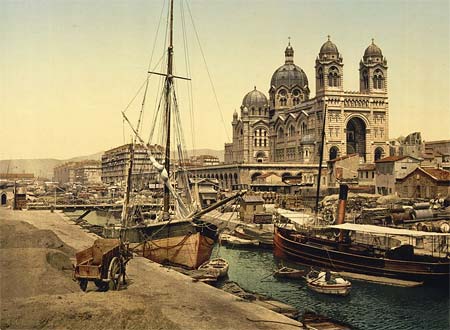Here in South Dakota, back in the 1990's, Robert Leroy Anderson was tried and convicted for kidnapping, raping, torturing, and killing two women. I was Circuit Administrator at the time, and he was tried in my circuit. Twice.
 Though no one knew it at the time, it all began when Larisa Dumansky disappeared on August 27, 1994, after working the night shift at John Morrell & Co. meat packing plant in Sioux Falls, SD. As so often happens, her husband, Bill, was briefly under suspicion, perhaps of an argument, perhaps of more. The idea was also floated that she might have taken off. The Dumanskys were both Ukrainian immigrants - maybe she'd gone home? Maybe she'd only come with him to get American citizenship? Maybe... But her husband denied all of it, and said she'd never have run off, they were perfectly happy, and even more so, because she was pregnant. But nothing was heard of her for years.
Though no one knew it at the time, it all began when Larisa Dumansky disappeared on August 27, 1994, after working the night shift at John Morrell & Co. meat packing plant in Sioux Falls, SD. As so often happens, her husband, Bill, was briefly under suspicion, perhaps of an argument, perhaps of more. The idea was also floated that she might have taken off. The Dumanskys were both Ukrainian immigrants - maybe she'd gone home? Maybe she'd only come with him to get American citizenship? Maybe... But her husband denied all of it, and said she'd never have run off, they were perfectly happy, and even more so, because she was pregnant. But nothing was heard of her for years.On July 29, 1996, Piper Streyle was getting her children (2 year old son, 3 year old daughter) ready to go to their daycare center. They lived in Canistota, and she worked at Southeastern Children's Center in Sioux Falls. Her husband Vance, had already gone to work. Piper never made it to work; the children never made it to daycare. Instead, one of Piper's co-workers called that afternoon, and was stunned when the daughter answered, weeping, saying that she and her little brother were alone in the house and that her parents were dead.
The daycare worker got on the phone to Vance and the Sheriff. They found the children alone in a trashed living room, with Piper's purse emptied on the floor. The sheriff asked what had happened, and the daughter told him, "Mommy's going to die." A"mean man" had come into the trailer, argued with their mother, and taken her away at gunpoint. Vance Streyle remembered a balding man, in his twenties, named Rob Anderson who'd come to their trailer 3 days before, at 7:30 a.m., to ask about enrolling his kids in the Streyle's bible camp for children. Piper told Anderson the camp was over for the year, but to sign up for next year. Anderson left his name and telephone number.
Robert Leroy Anderson was 26 years old, and had already been married twice, with 4 children. He was a maintenance man at John Morrell & Co. meat packing plant. Witnesses remembered seeing his truck parked up the way from Streyle's on the 26th and the 29th.
The police searched his truck, and found (among other things) receipts for duct tape, and a wooden platform with holes drilled into it with Piper's hairs on it, a dirty shovel, furniture moving straps, weeds, a toolbox and other evidence. At his home, the police found a pain of jeans stained with blood and semen. Also, handcuff keys.
 Two days later, the little daughter ID'd Anderson's photo as the man who took her mother. He was arrested on two counts of kidnapping, but not murder, because there was no body. In fact, they never found a body, despite a massive search that went on for days all around the Big Sioux River. They eventually found half of her shirt; later a farmer picked up the other half on the side of the road. They also found a roll of duct tape with human hairs attached to it that matched Piper's DNA, as well as rope and chains, eyebolts, a vibrator and a half- burned candle.
Two days later, the little daughter ID'd Anderson's photo as the man who took her mother. He was arrested on two counts of kidnapping, but not murder, because there was no body. In fact, they never found a body, despite a massive search that went on for days all around the Big Sioux River. They eventually found half of her shirt; later a farmer picked up the other half on the side of the road. They also found a roll of duct tape with human hairs attached to it that matched Piper's DNA, as well as rope and chains, eyebolts, a vibrator and a half- burned candle. In May 1997, Anderson was tried and found guilty of kidnapping Piper, and sentenced to life imprisonment in the South Dakota State Penitentiary.
Well, after that, a buddy of Anderson, Jamie Hammer, said that Anderson had been obsessed with torturing and murdering women ever since high school. Hammer was kind of into it himself. They used to sit around and plan the perfect crime. In 1994 they tried it. They got "wheel poppers" and put them on the road and were almost successful, except the poor woman whose wheel got flatted managed to break free. She was one of those who testified against Anderson.
There was another friend who was in on that attempted kidnapping: Glen Walker. In 1997, after Anderson's conviction of kidnapping Piper Streyle, Walker confessed to participating in the kidnapping (at knifepoint) of Larisa Dumansky, as she left work on August 26th, 1994. The two men drove her out to Lake Vermillion, where Anderson raped, tortured, and killed her. (If you want the details, look them up yourself - they are horrific.) Walker always claimed that he just watched. That was how he knew that she pleaded desperately for her life (remember, she was pregnant).
 Walker was the one who showed them where Larisa was buried, under a chokecherry bush. Only part of her skeleton was still there, but they found enough to identify her.
Walker was the one who showed them where Larisa was buried, under a chokecherry bush. Only part of her skeleton was still there, but they found enough to identify her.Meanwhile, Anderson was in prison, and his one-time cellmate, Jeremy Brunner, contacted the attorney general's office in August 1997. He told them that Anderson bragged in great detail about the murders of Piper Streyle and Larisa Dumansky. That Anderson admitted he was a serial killer; that he kept souvenirs or trophies of his victims at his grandmother's house. That he had moved Larisa's skull to prevent them from IDing the body. And he asked Brunner to kill Walker, his old friend, because he knew Walker would turn him in. Anderson drew up maps for him, and told him where he had a gun stashed - again, in his grandmother's house.
The police searched his grandmother's house and found jewelry belonging to Piper Streyle and Larisa Dumansky, as well as Anderson's gun, all exactly where Brunner had said they would be.
September 4, 1997, Anderson was finally charged with murdering Larisa Dumansky, and with the rape and murder of Piper Streyle (remember, he'd just been convicted of kidnapping her before). The trial began in March, 1999, and he was convicted on April 6th on all counts. Three days later, he was sentenced to death. Walker was tried in March, 2000 and pled guilty to attempted kidnapping, and accessory to kidnapping and first-degree murder and conspiracy to kidnap Larisa Dumansky. He received a total of 30 consecutive years. He just got out on parole this year... (believe me, I feel your horror.)
Anderson appealed his death sentence in 2002 - which here in South Dakota was a non-starter - but on March 30th, he was found dead by hanging. The interesting part of this was that he was in a segregation cell, not his death-row cell, because he'd been found in possession of a razor blade. (There's been some unofficial debate about that...)
Reactions were universally, grimly positive:
 |
| Robert Leroy Anderson |
Vance Streyle: "This is what we were after anyway. It just saved some time and effort."
I remember going to the last day of Anderson's trial - Anderson sat like a big fat white slug and smirked through the whole thing.
Did I mention that, back at Morrell's, a lot of coworkers admitted that they'd heard Anderson talk about kidnapping, raping, torturing, killing women, but couldn't believe that he meant it? That he was serious? So they never said a word to anyone, because they didn't want to look ridiculous... Two women dead, another woman terrorized, and hints, rumors, of other women who might have disappeared, back where he used to live...
As I used to tell my classes, if anyone starts talking about how much fun it would be to do the things that Robert Leroy Anderson did, the hell with ridicule, I'm going to turn them in.
A serial killer as the hero? Not in my fictional universe. Not now, not ever.



